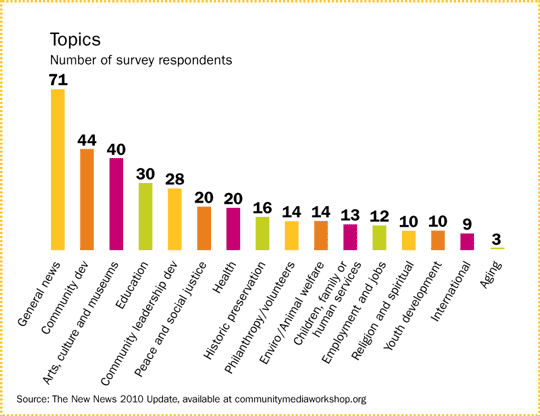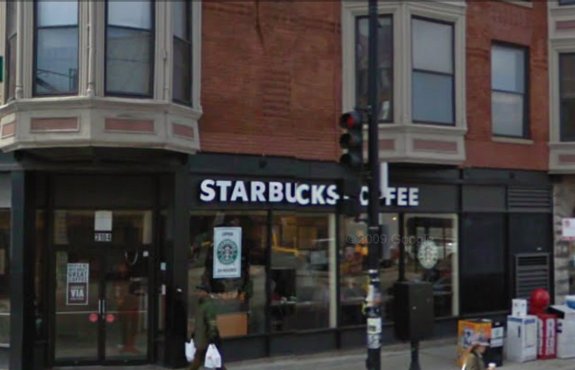The Chicago Neighborhood News Bureau features a depth of coverage of many communities and issues that isn’t always accessible. Over the summer I spoke with Gordon Walek and Patrick Barry about the site. Our conversation quickly shifted from online news to the way reporting can be used in service to communities and organizations working with communities and some of the challenges posed by this model.
The Chicago Neighborhood News Bureau looks like an elegant aggregation of news from local news organizations, neighborhood groups and nonprofit organizations – which it is. But it’s just one face of the relationship between reporting and community development for neighborhoods throughout the city.
The idea for the site came from the overwhelming amount of information available on the web, said Patrick Barry, a contractor with Local Initiatives Support Corporation Chicago, or LISC/Chicago, the organization that sponsors the site. The organization brings together financial and technical resources to support community-building groups to develop infrastructure, housing, employment and other assets in Chicago neighborhoods.
The Neighborhood News Bureau site aggregates news from organizations supported by LISC/Chicago, ones reporting on neighborhoods where LISC/Chicago sponsors programs, and news outlets covering issues related to community development. Barry said he had used aggregator sites that help collect and filter online news, but there were no such sites that focused on news for low-and-moderate-income communities.

“Our thrust is to identify interesting stories in the neighborhoods where we work,” Gordon Walek said.
Walek is the communications manager at LISC/Chicago and manages the neighborhood news aggregator. He said the kind of urban affairs coverage collected by the site has been largely abandoned by the city’s newspapers. Even in the heydey of daily newspapers, Walek said, many of the communities and issues covered in stories aggregated by the site lacked coverage.
Barry said the site’s audience was interested in the process or neighborhood development and issues affecting developing neighborhoods like affordable housing or violence and includes professors of community development and urban studies, reporters, developers and bankers. Former community residents can also use the site to stay informed about their old neighborhood, he said.
While the site continues to suck in news feeds from a range of Chicago sites, further development of the Neighborhood News Bureau site has been limited by a lack of funds, Barry said. But the news site is just one part of LISC/Chicago’s ongoing use of reporting in the community development process.
Walek said LISC/Chicago’s involvement in reporting came out of a need to make the development process transparent to the communities where development projects were happening. The development corporation hired journalists to report on community meetings about development projects. Rather than simply take minutes of the meetings, Walek said, the journalists were tasked with writing stories about the implementation of development plans and how the plans were received by community members.
“Straight journalism can be a very powerful tool to inform people about community development,” Barry said.
Reporters covering neighborhood development plans for LISC/Chicago are known as “scribes.” Barry, the organization’s first scribe, said the name implies a role as a servant to the community rather than being independent from the community. Barry said that while a traditional reporter might attend a community meeting about development plans in search of a good story, a scribe’s goal is to reflect the issues that were surfaced at the meetings in a way that is useful to community residents in understanding what was happening or planned to happen. Scribes were also tasked with contributing to quality of life reports that helped drive neighborhood development projects. Because the scribes listened closely to voices from the neighborhood, “writing as an insider using the voice of a neighborhood,” Barry said, neighborhood residents felt ownership of the development plans.
In order to write with the voice of the neighborhood, scribes, who mostly live outside of the neighborhoods they report on, had to rethink their impression of the neighborhoods and the language they used to write about those places, Barry said. While a reporter’s impression of a neighborhood may be of a “bombed-out ghetto,” Barry said, the reporter had to quickly learn that residents didn’t appreciate that description. More importantly, it wasn’t how they thought of their neighborhood. LISC/Chicago reporters, he said, have learned a lot from neighborhood residents about how to talk about places.
Barry said working to document development projects with LISC/Chicago has given many reporters a deeper perspective of neighborhood dynamics than when they covered neighborhood issues for traditional media. Traditional reporting only allows journalists to perceive a neighborhood through controlled interactions such as a public meeting or a scheduled interview with a key stakeholder, Barry said. Spending more time in the community allows journalists working for LISC/Chicago to see a more nuanced and often more difficult view of community decision making. Barry said being embedded in the community gives reporters access to the egos or duplicity of neighborhood figures, internal squabbling, friction over gentrification and ethnic tensions. Often, Walek said, scribes are able to see such aspects of the neighborhood in a way that managers of programs operating in the neighborhoods can’t.
While LISC/Chicago scribes have a long-term relationship with neighborhoods, sometimes spanning eight years, and get a comprehensive view of the communities, they must balance their access to unflattering aspects of the neighborhood with the needs of the community. Scribes may write about internal conflict in the neighborhood, Barry said, but only if it’s constructive.
Scribes must also balance covering problems facing the neighborhood while recognizing that crime reports dominate traditional media coverage in some areas such as Englewood or North Lawndale where LISC/Chicago supports programs. Walek said crime is an “800 pound gorilla” when reporting on these communities because it is present, but the organization wants to offer a more diverse view of the neighborhood. Walek said reporters for his organization might cover community events like street fairs, neighborhood sports programs or programs that integrate teen health and education needs.
A video slideshow about the “B-Ball on the Block” sports program shows how LISC/Chicago’s reports acknowledge problems like violence and segregation, but ultimately focus on community-based responses. Walek said reports forefront “innovative solutions to what seems like an insurmountable problem.”
“There’s a lot of human capacity in these neighborhoods,” Barry said.
While stories tend to have a positive focus and highlight LISC/Chicago-supported programs or partners, they also give considerable space and agency to neighborhood residents or neighborhood dynamics that aren’t usually addressed in the media, such as conflict between Latino and African-American communities in Humboldt Park, the subject of a recent story. The focus on supported programs is in part to offer program funders a way to evaluate programs in a way that is more engaging than a traditional report, Walek said. Stories, photographs and multimedia can sometimes better record the impact of a program’s work and how it was received by the community.
Photographs are also important for giving readers outside of profiled communities a more nuanced idea of the neighborhoods that emphasizes similarities between diverse communities, Barry said. He cited how photos of well-maintained houses in Little Village might challenge outside perceptions of the neighborhood.
Over time, Walek said, LISC/Chicago reporting has created an unintentional record of how some neighborhoods have evolved. However, like many new models for reporting, LISC/Chicago is dependent on foundations to pay journalists, Walek said, and he’s not sure how reporting will get funded after foundation money runs out.

